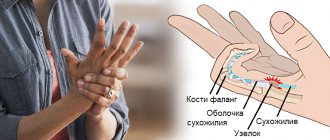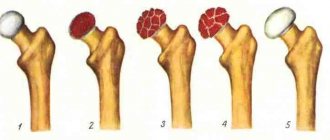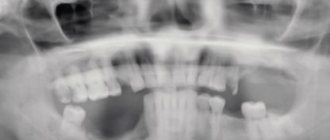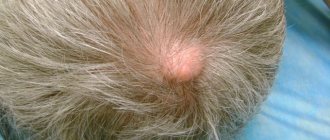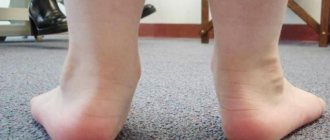One day hospital 3rd KO
Malykhin
Sergey Aleksandrovich
11 years of experience
First qualification category
Make an appointment
Polyarthritis means multiple inflammation of the joints. It can develop in different parts of the body at the same time. The disease disrupts the functioning of cartilage, tendons and ligaments, and also provokes unbearable pain and inflammation in the muscles.
The disease can exist in chronic or acute form. In the acute form, the disease progresses rapidly and is characterized by severe symptoms. In the second case, the picture is more blurred, but the patient runs a high risk of remaining disabled. How not to miss the first symptoms of this disease and what to do if they are detected?
Symptoms of polyarthritis
Signs of polyarthritis of the joints manifest themselves through:
- constriction, internal stiffness;
- multiple swellings (in the area of three or more joints);
- thickening of the limbs;
- the appearance of pain when trying to squeeze or squeeze the affected area of the body;
- shortness of breath, development of bronchitis, difficulty swallowing food (with affected laryngeal joints);
- hyperthermia;
- malaise;
- redness;
- swelling;
- small dislocations of the cervical vertebrae, pinching blood vessels, nerve roots, and spinal cord.
Symptoms of polyarthritis are typical not only for adults, but also for children. In this case, not only the child’s joints begin to suffer, but also poorly formed internal organs.
Are you experiencing symptoms of polyarthritis?
Only a doctor can accurately diagnose the disease. Don't delay your consultation - call
Symptoms and signs of juvenile arthritis
Juvenile arthritis in children is dangerous because the peculiarities of the course of pathological processes can negatively affect the growth zones and disrupt the process of natural growth of the child
.
The main clinical signs of juvenile arthritis are stiffness, swelling, tenderness and local redness of the skin of the joint.
To the initial signs
Juvenile arthritis may include:
- weakness, general malaise, relatively slight increase in body temperature, loss of appetite, cold sweat;
- rashes of various kinds in the area of the affected joint, not accompanied by itching;
- limited joint mobility in the morning;
- local swelling, pain in one or more large joints;
- periodic heart pain, shortness of breath.
To signs of systemic manifestations
at the stage of the acute form of development of juvenile pathology include:
- heart pain, bluish skin;
- cough, difficulty breathing;
- disorders of the gastrointestinal tract;
- enlarged liver, spleen;
- renal dysfunction;
- inflammation of the visual organs;
- growth slowdown.
If you have one or more symptoms, you should urgently seek qualified medical help.
Risk factors
A common cause of polyarthritis of the hands or other parts of the body is a genetic factor. That is, the disease is inherited. At a certain point, the immune system begins to attack the cartilage, destroying it and surrounding tissue. As a result, inflammation and further irreversible processes occur.
It should be clarified that even if there is a genetic predisposition, not all people become victims of such an unpleasant disease. For its “launch” to occur, a confluence of certain circumstances is necessary. They may be:
- injuries;
- lack of vital vitamins;
- obesity;
- diseases of the endocrine system;
- stress;
- exposure to toxins and allergens;
- respiratory tract infections.
Prevention measures
Knowing what polyarthritis is and how to treat it, it is not difficult to guess about measures to prevent it. Compliance with these measures is important for everyone, but they are especially relevant for people whose close relatives suffered from this disease, since the tendency to it is inherited. Orthopedic doctors recommend:
- Maintain a normal weight (normal BMI is 18.5–25).
- Avoid traumatic factors: intense training, work associated with vibration, heavy lifting, hypothermia.
- Use means of protecting joints and correcting their biomechanics: knee pads, elbow pads, instep supports, orthoses, etc.
- Eat rationally. Eat enough foods high in calcium and phosphorus, do not overuse meat or protein supplements, which provoke the development of gout.
- Quit smoking and alcohol.
- Maintain a healthy lifestyle, increase immunity and follow hygiene rules to reduce the risk of respiratory, intestinal and sexually transmitted diseases.
An important measure to prevent complications of polyarthritis and loss of joint functionality is timely consultation with a doctor. At the slightest sign of trouble, it is best to make an appointment with an orthopedist at our clinic, this will allow you to start treatment in a timely manner and maintain healthy joints.
Classification
There are several types of polyarthritis:
- rheumatoid;
- infectious;
- crystal;
- psoriatic;
- reactive;
- destructive.
Rheumatic arthritis occurs most often among other types of disease. It is extremely dangerous and can lead to disability. Women are more susceptible to it. The disease occurs against the background of a severe weakening of the immune system. It attacks the hands, feet, destroys blood vessels, heart, kidneys. The synovial cavity with fluid accumulation becomes larger. The patient feels pain, fever and stiffness of movement.
Infectious polyarthritis occurs against the background of a pathogenic microorganism that enters the joints through the blood. With this disease, pus often forms. If measures are not taken in time, the patient will completely lose mobility of the affected joints.
Psoriatic polyarthritis appears against the background of the underlying cause - psoriasis - no earlier than six months later. Most often, this type of disease affects the feet of patients over 45 years of age. The peak of pain occurs in the morning. All movements become constrained, especially after prolonged sleep or rest.
Polyarthritis of the shoulder joint, fingers, and hands is also common. It can be triggered by severe hypothermia, domestic or industrial injuries, as well as tight, uncomfortable shoes or clothing. The bones in the legs and arms literally begin to stick out, taking on an unnatural appearance.
Stages of development of juvenile arthritis
Juvenile rheumatoid arthritis occurs in 4 stages:
- Initial – lasts up to 6 months
. Damage to articular bone tissue. - Early – lasts from 6 to 12 months
. Destruction of cartilage tissue, proliferation of the joint membrane, reduction of the joint lumen. - Expanded - can last up to two years
. The appearance of erosions on cartilage and bone tissue, the formation of subluxations. - Late – lasts more than 2 years and leads to disability
. Fusion of bone tissue, loss of limb mobility.
Diagnostics
To make sure that the patient really has polyarthritis of the joints, and not a disease with similar symptoms, the doctor prescribes a differential diagnosis. During it, those diseases that can be confused with polyarthritis are gradually eliminated.
Diagnosis consists of a medical examination, as well as:
- x-ray;
- MRI or CT;
- general blood test;
- general urine analysis;
- histological examination of joint tissue samples;
- arthrography.
Based on the data obtained, treatment for polyarthritis is prescribed.
Detection and treatment of polyarthritis in our medical center
To prescribe an effective treatment regimen for polyarthritis, one should start primarily from the reasons that provoked the development of this disease. To determine them, the following types of instrumental studies are used:
- Ultrasound of joints and nearby soft tissues;
- blood, urine, synovial fluid tests;
- x-ray of joints;
- MRI, etc.
If the attending physician deems it necessary, studies such as abdominal ultrasound, bacterioscopy, PCR, etc. may also be prescribed. This insidious disease is not so easy to identify. This is due to the fact that the symptoms of polyarthritis can be vague and also characteristic of other diseases and injuries of the musculoskeletal system, for example, a meniscus tear, etc. If the patient was given an incorrect diagnosis, then the wrong treatment will be prescribed. This leads to further progression of polyarthritis and the occurrence of its complications. But our clinic employs exclusively qualified specialists, and you can be confident in the accuracy of their diagnoses.
Doctors who receive treatment at ON CLINIC Ryazan first of all strive to relieve a patient with identified polyarthritis of the fingers and other joints from pain and other discomfort accompanying this disease. In addition, truly effective treatment is also aimed at regenerating joint tissue and returning them to normal function, as well as preventing further progression of the disease. The therapeutic regimen may include:
- the use of pharmaceuticals - orally or locally, as well as in the form of injections;
- exercise therapy;
- massage;
- physiotherapy;
- Spa treatment;
- specially designed diets for restoring joint tissue, etc.
Most often, treatment of polyarthritis is carried out in courses to stop periodic exacerbations of the disease.
Treatment
How to treat polyarthritis? First you need to understand and eliminate the disease that caused the disease. It could be psoriasis, a viral infection or gout, for example. Treatment of polyarthritis of the joints also necessarily includes anti-inflammatory therapy, against the background of which severe pain should disappear. In addition, the patient needs to strengthen his immunity and the body’s resistance to infections and viruses.
Physiotherapy has a good effect on the affected areas:
- acupuncture;
- acupressure;
- manual sessions;
- pharmacopuncture.
Causes of Arthritis
Arthritis is a consequence of damage to the articular cartilage or the entry of microorganisms into the synovial fluid.
In the first case, the pathology occurs due to degenerative processes in tissues due to injury or osteoarthritis. The causes of inflammatory arthritis are infection and waste products of microorganisms when:
- migration of the pathogen through blood and lymphatic vessels from nearby tissues;
- infectious diseases affecting the entire body - tuberculosis or gonorrhea;
- toxic-allergic effects of by-products of microorganisms;
- an allergic reaction to the body’s own tissues after an infection or in the presence of a permanent focus of inflammation, accompanied by a disruption in the functioning of the immune system;
- injury to the joint and infection through the wound or aseptic inflammation.
The following factors contribute to the occurrence of the disease:
- hereditary predisposition;
- increased load on the musculoskeletal system;
- infectious diseases;
- consuming large amounts of caffeine;
- smoking;
- excess weight;
- allergic reaction;
- metabolic disorders;
- traumatic injury;
- hypovitaminosis and lack of nutrients;
- pathology of the nervous system;
- malfunctions of the immune system;
- improper diet, consumption of alcoholic beverages;
- hormonal disorders;
- stinging insect bites;
- hypothermia of the body.
Home treatment methods
When treating polyarthritis, a diet is prescribed. Every extra kilogram of weight increases the load on the joints, causing the disease to actively progress. To eliminate the disease it is necessary:
- take medications;
- perform therapeutic exercises;
- take massage courses;
- use traditional medicine recipes.
Nonsteroidal anti-inflammatory tablets are used as medications. They eliminate fever, pain, swelling and redness. Anti-inflammatory drugs can also be injected and applied in the form of ointments.
If the infection spreads and pus forms, an additional course of antibiotics is added. They can be administered intravenously, intramuscularly or directly into the joint cavity.
Chondroprotectors, immunomodulators, and preparations with calcium D3 are used in treatment.
Possible complications
Despite the fact that in most patients juvenile arthritis proceeds without complications, with the onset of long-term remission, there is always a risk of complications.
.
Failure to seek medical help in a timely manner, as well as refusal or deviation from prescribed treatment can lead to the development of a number of serious complications, including:
- persistent impairment of joint mobility, causing disability;
- development of cardiopulmonary failure;
- severe impairment of the visual system;
- infectious complications.
Clinical guidelines
Due to the fact that the exact causes of the disease cannot be established, clinical recommendations are of an exclusively general nature and are primarily aimed at eliminating the likelihood of a recurrence of exacerbation of the disease.
In order to maintain the achieved treatment results, it is important to combine therapy with observation by a rehabilitation specialist
, which will help develop an action plan to preserve the functionality of the joint.
Among the main recommendations it is worth highlighting:
- increasing vigilance and strengthening measures to ensure sufficient heat levels for the body;
- eliminating the likelihood of stressful situations;
- systematic visits to the attending physician, even with favorable treatment.
Compliance with the recommendations allows you to slow down or completely stop the processes of relapse of pathological processes.
Rheumatoid arthritis: reversibility of changes
Rheumatoid arthritis is a systemic immunoinflammatory disease of connective tissue, manifested by chronic erosive-destructive polyarthritis with predominantly symmetrical damage to the joints of the hands and feet and accompanied in most patients by the formation of a special type of autoantibodies (rheumatoid factor). Women get sick 3–4 times more often than men, and their disease usually begins at the age of 35–45 years.
Painful, stiff joints not only interfere with the most basic everyday movements, but also significantly disrupt the rhythm of normal life.
Rheumatoid polyarthritis is a severe systemic disease that manifests itself as progressive inflammatory synovitis, symmetrically affecting the peripheral joints of the extremities.
In accordance with the recommendations of the American Rheumatological Association (1987), when diagnosing rheumatoid arthritis, it is advisable to adhere to the following criteria:
- morning stiffness of joints or near joints lasting at least 1 hour until it completely disappears;
- soft tissue swelling (arthritis) of three or more joints observed by a physician (i.e., during the examination or in history under the supervision of a physician);
- swelling (arthritis) of the proximal interphalangeal, metacarpophalangeal, or wrist joints;
- symmetrical swelling (arthritis) in at least one pair of joints;
- rheumatoid nodules;
- presence of rheumatoid factor;
- detection by X-ray examination of erosions and (or) periarticular osteoporosis in the joints of the hands and feet.
With a long-term disease, the affected joints become deformed. In addition to the joints, with rheumatoid polyarthritis, periarticular structures (ligaments, tendons, etc.) are damaged, rheumatoid vasculitis (damage to small vessels), osteoporosis, and internal organs are damaged.
The immunopathological/autoimmune nature of the inflammatory process in rheumatoid arthritis is supported by the detection of autoantibodies, rheumatoid factor, in the blood serum and synovial effusion from the affected joints in most patients.
Genetic predisposition is of great importance in the development of rheumatoid arthritis. This is confirmed by the pronounced familial aggregation of the disease, the presence in some patients with rheumatoid arthritis of class II antigens of the major histocompatibility complex HLA DR4 and Dw4 (carriage of which is associated with severe arthritis and rapid progression of erosive changes in the joints). The role of hereditary or acquired disorders of T-suppressor regulation of immune reactions and insufficient function of the monocyte-macrophage system is considered. The triggering role in the development of rheumatoid arthritis can be played by: chronic foci of infection, hormonal changes in the body, food allergies, previous joint injuries, prolonged exposure to damp cold and physical overexertion.
With chronic inflammation at the edge of the articular cartilage at the site of attachment to the epiphyses of the articular capsule, sections of subchondral bone tissue are destroyed and replaced by pannus with the formation of erosions. Sometimes the expanding granulations penetrate through the subchondral endplate into the bone tissue. The products of osteochondral destruction, in turn, have an irritating effect on the synovial membrane, which helps maintain the inflammatory process in it. At the same time, inflammatory changes occur in the joint capsule, ligaments, synovial lining of tendons and synovial bursae, followed by sclerosis, leading to persistent limitation of mobility of the affected joints, subluxations and contractures. Sometimes necrosis and rupture of tendons and synovial bursae are observed. The development of secondary osteoarthritis is often noted.
The inflammatory process in rheumatoid arthritis is characterized by steady progression, the rate of which depends on the activity of the inflammatory process. Even during periods of clinical remission, signs of inflammation remain in the synovium. Gradually, the pannus destroys cartilage on a significant surface of the epiphysis, and the granulation tissue that replaces it connects the opposite articular surfaces and is subsequently transformed first into fibrous and then into bone tissue, which leads to the formation of fibrous and bone ankylosis, respectively, causing complete immobility of the affected joints.
X-ray examination of the joints reveals an asymmetry of erosive changes with frequent and early ankylosis of the wrist joints.
The course of seronegative rheumatoid arthritis is less severe and, in prognosis, more favorable than with the seropositive form of the disease: destructive (erosive) changes and functional disorders of the joints are less pronounced, ulnar deviation of the fingers, contractures and ankylosis are less common (with the exception of ankylosis of the wrist joints). At the same time, seronegative rheumatoid arthritis is less amenable to treatment with basic and immunosuppressive drugs than seropositive rheumatoid arthritis. Secondary amyloidosis develops more often.
In the treatment of rheumatoid arthritis, NSAIDs are used; in severe cases, glucocorticosteroids and immunosuppressants are used; in order to prevent osteoporosis, a combination of calcium and vitamin D preparations is usually prescribed.
Despite all the advances in pharmacology, rheumatoid arthritis still remains a serious disease with a poor prognosis.
Let us give an example from personal experience in managing a patient with rheumatoid arthritis, which, in the author’s opinion, is of scientific interest.
Patient V., age 71 years, consulted a neurologist in August 2006 with complaints of pain in the joints of the hands, knee joints, and lower back. The pain in the joints bothered me day and night, was usually severe, often migrating, and caused the limitation of all active and passive movements in the affected joints. Arthralgia was often combined with severe myalgia, ossalgia, and tendon pain. From the anamnesis: manifestations of polyosteoarthrosis for 15 years, debut of inflammatory articular syndrome in June 2002 (swelling and inflammation in the joints, febrile fever, laboratory-confirmed activity of the inflammatory process). On an outpatient basis (at first periodically, in the last 3 years constantly) she received NSAIDs (ibuprofen, indomethacin, diclofenac, aceclofenac). Since 2004, she regularly took calcium D3 (1 g calcium per day).
| Rice. 1. X-ray of the hands of patient V. 2003: manifestations of polyosteoarthrosis, no obvious erosions. Rice. 2. X-ray of the hands of patient V. 2006: multiple cysts and erosions, negative dynamics since 2003. |
She received inpatient treatment at the city rheumatology center of St. Petersburg (April 2003, June–July 2006) with a diagnosis of rheumatoid arthritis, seropositive, with systemic manifestations (low-grade fever, amyotrophy, myalgia), grade 2 activity, functional insufficiency of joints of the 1st–2nd degree. Concomitant pathology: coronary heart disease, angina pectoris FC II. Hypertension of the 3rd degree, stroke (December 2002). Chronic bronchitis without exacerbation. Diffuse goiter of the second stage. Euthyroidism. Polyosteoarthrosis. Cholelithiasis.
Since 2003, he has been constantly receiving methotrexate at a dosage of 2.5 mg 2 times a week. Despite the treatment, joint pain increased, exacerbations became more frequent, and bone condition worsened (osteoporosis, erosion). X-rays of the hands are indicative (Fig. 1–2).
| Rice. 3. X-ray of the hands of patient V. 2007: manifestations of polyosteoarthrosis, positive dynamics since 2006. |
Since August 2006, during treatment with methotrexate, the neurologist additionally prescribed Structum at a dosage of 500 mg 2 times a day. The patient is oriented by the doctor to long-term, up to six months, taking the drug. A slight decrease in the intensity of the pain syndrome (which has been ongoing for the last 2 months) occurred after 3 weeks. There were episodes of exacerbations of rheumatoid arthritis for 4 months. By the end of the 5th month of combination therapy (methotrexate + Structum), the pain syndrome decreased significantly, morning stiffness decreased, and swelling of the wrist and knee joints subsided.
In February 2007, an X-ray of the hands was taken (Fig. 3). The result of comparison with previous x-rays was more than positive (bone erosions decreased). Reception of structum was extended for 3 months. As of May 2007, no exacerbations of the articular syndrome were observed for 4 months; slight swelling remained on the wrist (more on the left) and knee joints. In order to correct antirheumatic therapy (reduce the dose of methotrexate), the patient is recommended to consult at the city rheumatic center.
I. N. Baburin SPbNIPNI im. V. M. Bekhtereva, St. Petersburg



